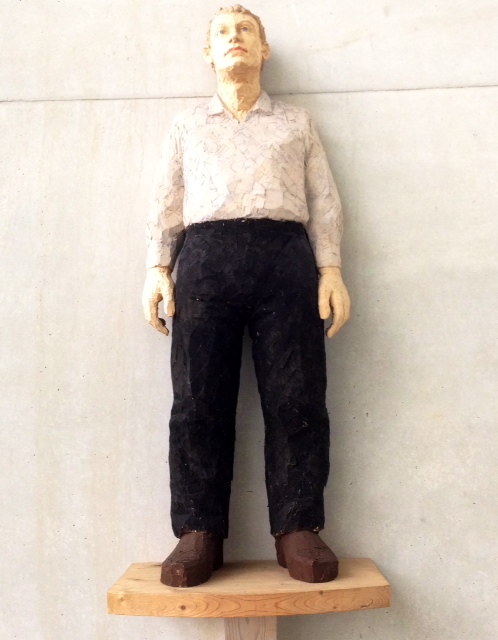The English sculptor Tony Cragg, like Antony Gormley, has long interested me for his rigorously inventive approach to figuration. His studio in Wuppertal, half an hour by train from Dusseldorf, was to be my first port of call in Germany. Unfortunately, my visit coincided with him being out of the country, so visitors are precluded, until his return.
Determined to go anyway, I did the the next best thing, and visited the Skulpturepark Waldfrieden, Wuppertal, which is a repository of Cragg’s work. The Park, an initiative of his, is spread over a fourteen hectare site which once belonged to the Wuppertal industrialist, Professor Kurt Herberts, who commissioned the architect Franze Krause to build a two storey villa there between 1947-50.
The luxuriously appointed building features an interior, designed to coordinate dynamically with its inhabitants, and an exterior perfectly harmonised with its grounds and natural surroundings. It is an ideal setting to see, and house, Cragg’s steadily growing collection of radical figuration.
As well, there is a superb glass encased exhibition space, that has a changing program of international sculpture exhibitions.
During my visit, the German contemporary, Stephen Balkenhol was showing a range of his carvings, still figures, dynamically still.
My own work has sometimes been compared with Balkenhol’s, we have both carved and polychromed figures in timber. There, the comparison ends, Balkenhol is able to utilise his countries huge resource in Linden or Limewood, which he is able to work with, quickly and freely, on a very large scale. The recycled Ironbark I have used for many years is far less tractable, like the Australian landscape it comes from, it is slower and harder to work.
Limewood has a history of use as a fine carving material that goes beyond the middle ages, and German sculptors learned to excel in its use. Another reason for my being in Germany, I want to appreciate the scope of that achievement.
But I digress, Cragg’s figuration is the polar opposite of Balkenhol’s. Cragg makes use of the dynamics of the figure in motion, and is doing this in highly elaborate, mathematical configurations. Those dynamics have long been recognised, think of Marcel Duchamp’s celebrated painting, Nude Descending the Stairs or the turned profiles of the human head that create an aerodynamic representation.
Cragg recognised the beauty in the design and manufacture of the early plywood propeller, and has adopted that methodology, to the creation of his sculpture. In his studio, mathematically precise, plywood sections, formed to calibrate his dynamic drawings, are laminated and shaped by his assistants. What is achieved are forms which, at a glance, appear to be biomorphic abstractions. In fact they are closer to the discombobulations, that figures in motion become, when caught on time lapsed camera settings.
I’m experimenting with that imagery myself, when I am in well trafficed pedestrian thorough-fares. The bodies break up and form tenuous versions of their static shape.
Cragg has grasped the sculptural potential in such phenomena. The impact of his work is undeniable, especially in the setting of the sculpture park, which lends its natural tranquility perfectly, with the sculpture’s encouragement, to think and reflect.
I share Cragg’s recognition that our age lends itself to extraordinary new possibilities in sculpture, possibilities, which the technologies such as the creation of moving images, have long been opening up.
In this blog post Australian artist and sculptor Stephen Hart explores the work of Tony Cragg.
 Skulpturenpark Waldfrieden
Skulpturenpark Waldfrieden 

 Discombobulations
Discombobulations